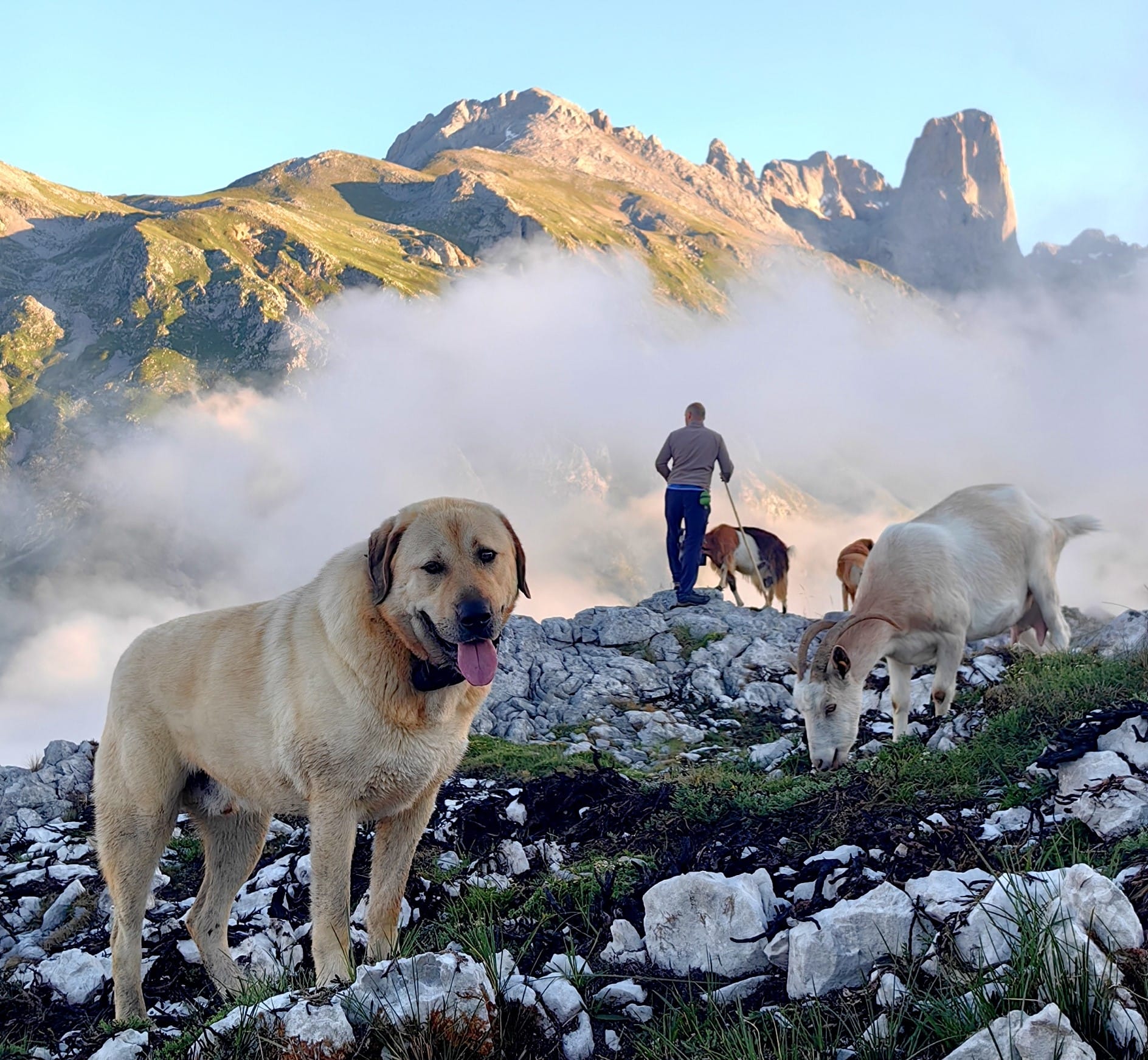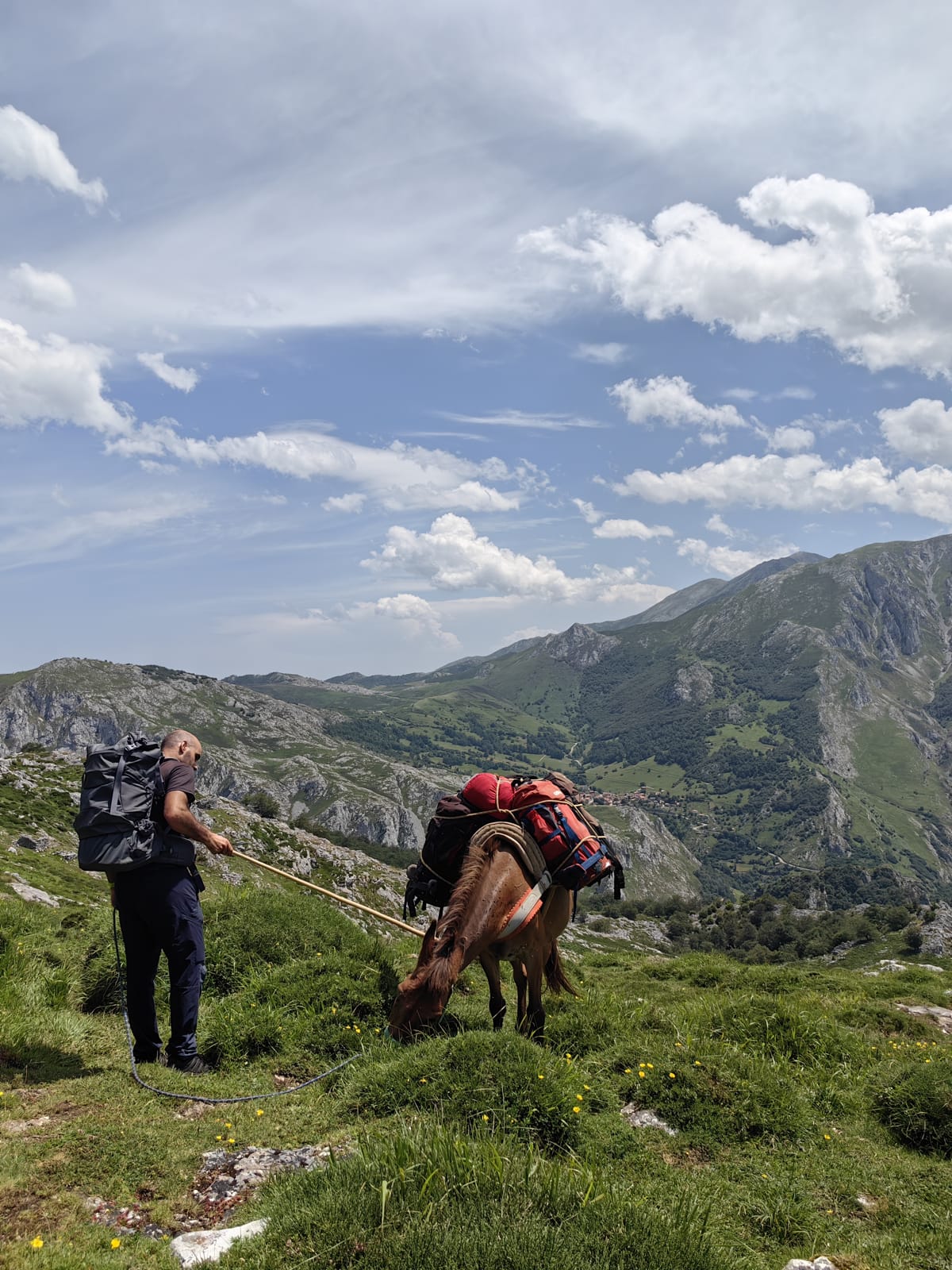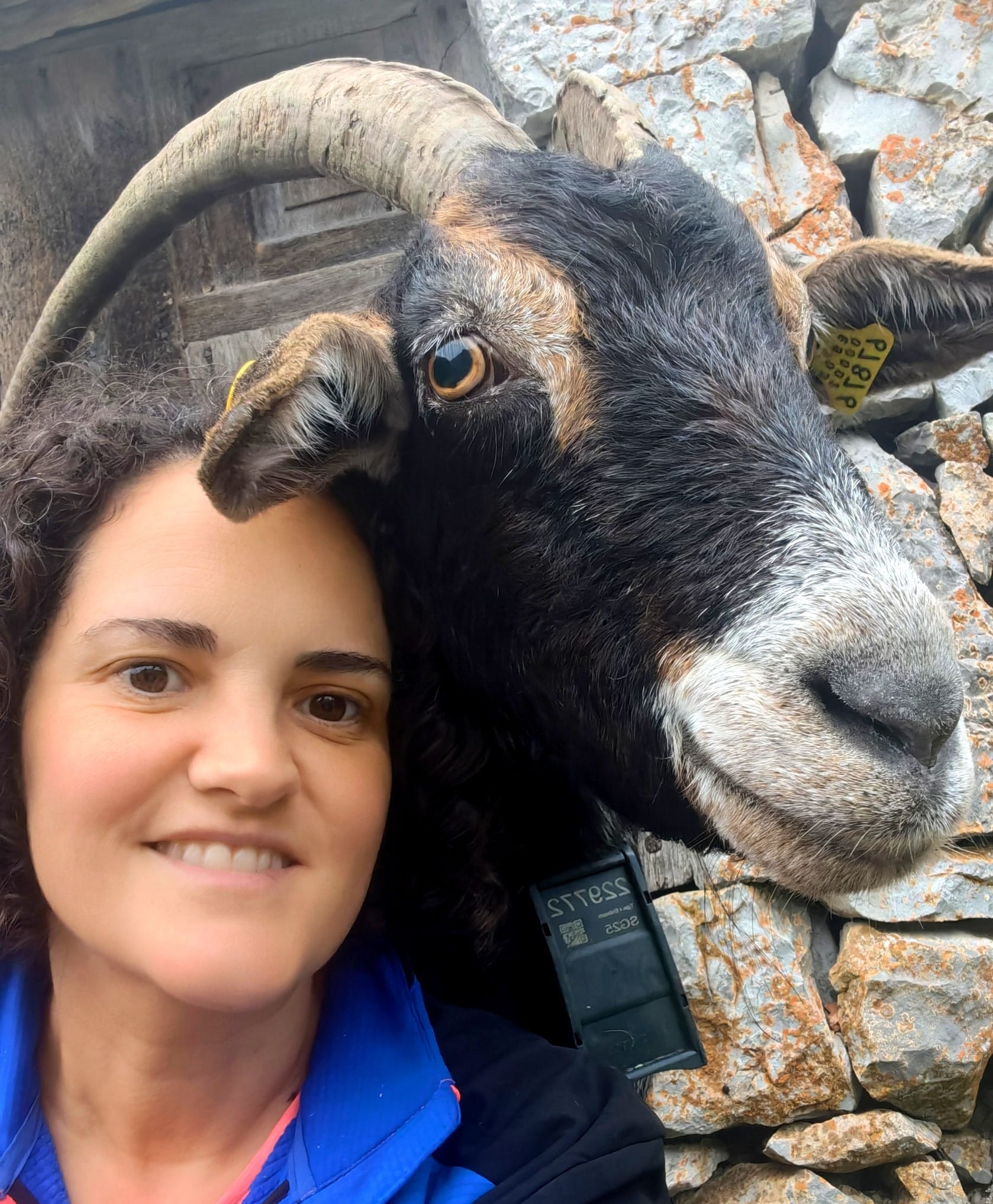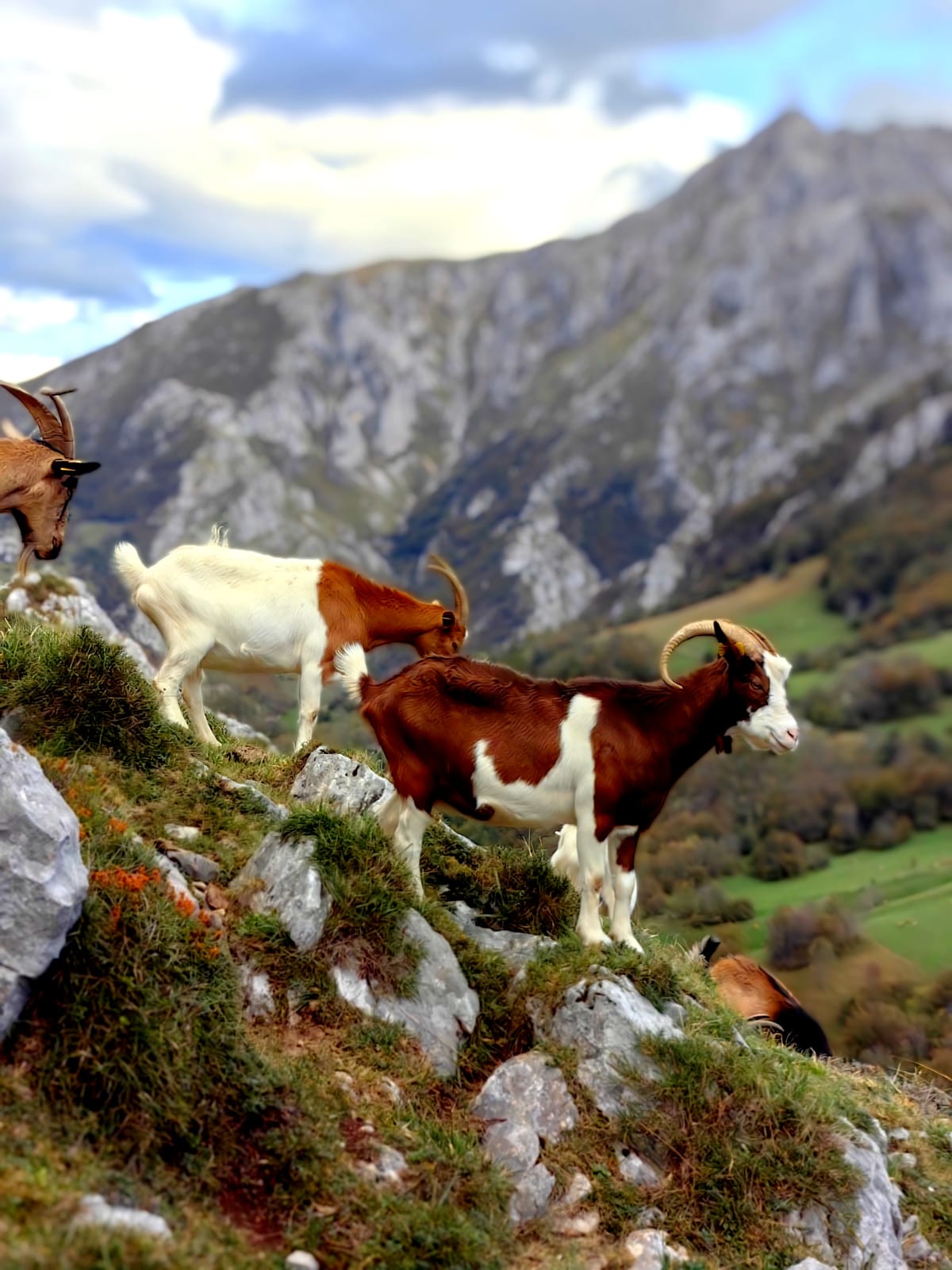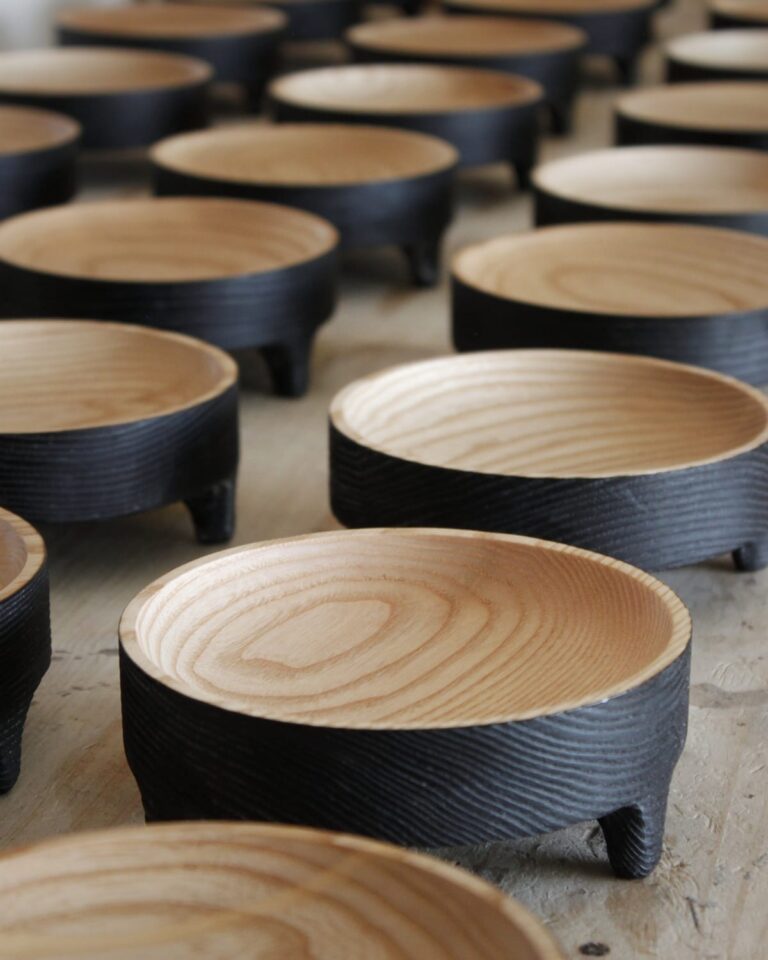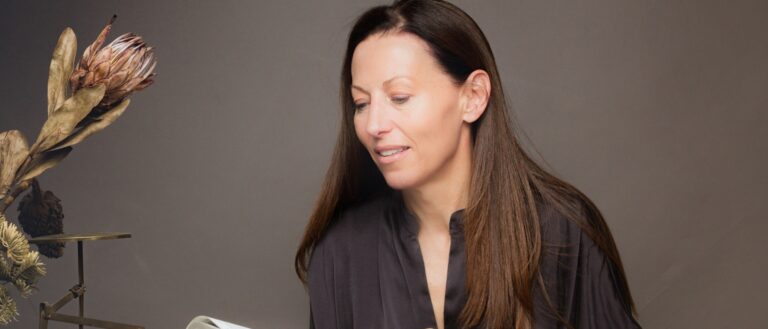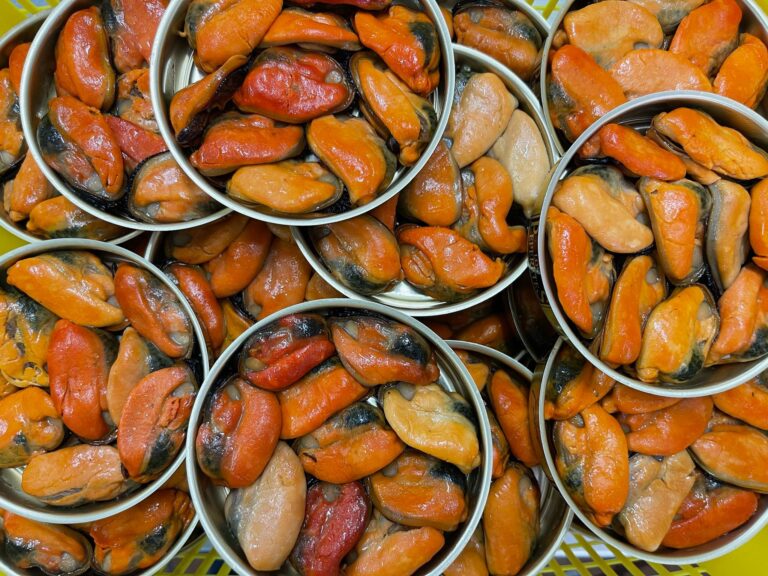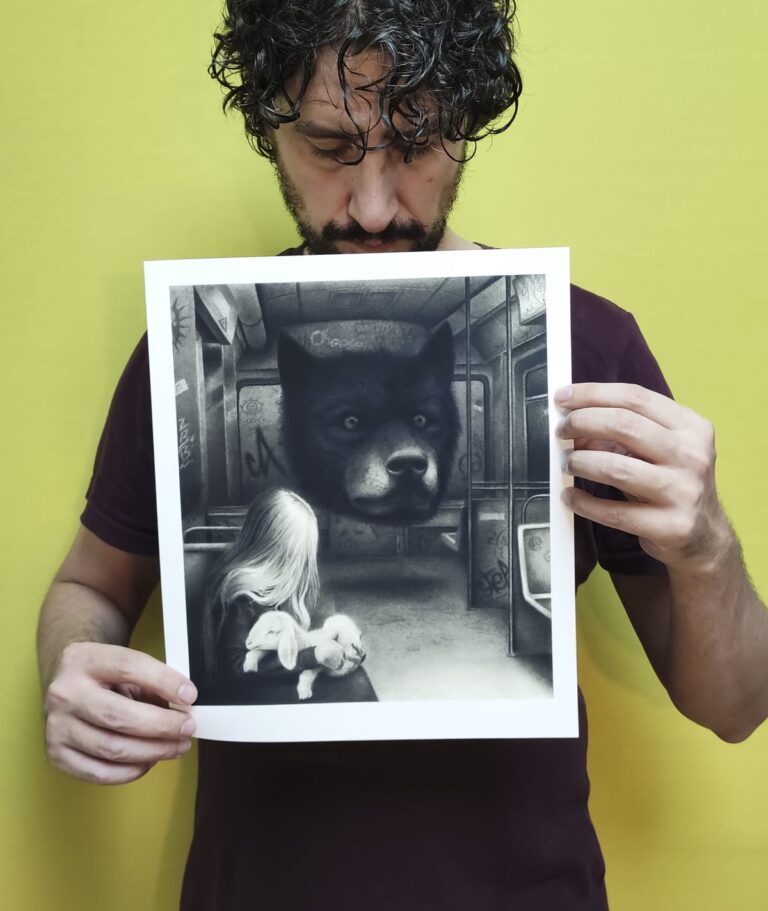Quesería Maín
The Picos de Europa are the guardians of tradition, of the secret of Cabrales cheese. In the Asturian mountain of Maín, two passionate artisans carry out the ancestral work of high-altitude shepherding. Bringing up the goats, bringing down the milk, bringing up the soft cheeses, bringing down the final product. Round trips across the mountain, a lot of dedication, passion, and a great love for these animals and this exquisite product.
Family tradition, experience, and some other tricks of elaboration have brought them awards and recognition. But they live in the moment, they adapt, they fuse modernity and tradition, they open their doors to people, they take care of their animals, they preserve Nature, and, above all, they make very good, quality cheese.
Today, Jessica López and Javier Díaz, owners of Quesería Maín, tell us more about their day-to-day in Sotres:

Hello Jessica and Javier. At what point did you decide to start making Cabrales cheese?
After finishing our studies we decided to return to the village and continue with the family tradition, since both families have always been dedicated to herding and making Cabrales cheese.
Can you summarise the process of making your cheese?
With our flock of goats, we do traditional herding. From January to the end of April, they are in the stable and go out to graze every day. These months coincide with the calving season and also the milking season, which lasts until the end of July. At the end of April, the animals go up to Maín, where they will be in total freedom until winter returns. During these months of freedom, they are milked and we take the milk down to the cheese factory.
We make two types of cheese, Cabrales and goat cheese. After a few days of drying we distribute them around the caves.
How many maturation caves are there approximately in your area and which ones do you use the most? How do you get them?
In this area, there are about twelve, but not all of them are in use. We use four, two in Sotres and two in Tielve. Some of them are not accessible by car, so we carry them in backpacks or on horses along high mountain paths. It takes up to an hour to walk.
In the caves we have to work with the cheeses weekly, turning and cleaning every one of the cheeses in the four caves.
It is difficult to have some free time in a job like yours, but do you have any hobbies outside of work?
We don't have much free time, between visits, goats, and cheese... But what we have we spend on hiking or cycling routes. We also like to travel, so one month a year we go on holiday to see the world.
How do you apply modernity, new ideas, or technology in your work?
Well, we have a cheese vending machine, so when we are not in the dairy, people can take a piece of the product. It is very original. There is also the possibility of buying online since we have an online store and we ship anywhere in Spain, Portugal, or France.
In addition, technologically we have a weather station where we record temperature, snow, air, and water throughout the year, which is very useful for our work.
We have also incorporated the "virtual fence" GPS system that our goats carry. We can control them from our mobile phone and we open and close the passage to the areas where they must graze, thus clearing areas that are impassable.
Our previous protagonist,Mantones Ángeles Espinar, left this question in the air: Would you teach your trade to another person so that it is not lost?
Yes, of course. I would love for there to be young people who want to learn everything about Cabrales cheese.
Do you have a favorite spot in Asturias?
We are more of a mountain person, we love the sunsets from the top of Maín.
What breed are your goats and what type of milk do they produce?
Our goats do not have a recognized breed, it is the breed that has always existed in Picos de Europa. This flock of goats belonged to Javi's great-grandfather and was passed on from one to another until it reached us. They have been grazing on Maín for more than 150 years.
Grazing in this area provides high-quality milk, providing a different flavor, texture, and nuances to the cheese. In addition, a great cheese yield is achieved.
What other types of cheese do you like?
We really like cured cheeses, one of our favorites is the DOP Queso Zamorano.
Which historical figure would you have liked to walk up to a maturation cave with and what would you talk to him about along the way?
With Don Pelayo. We would like him to see what Asturias is today.
What do the words "ecology" and "respect for the environment" mean to you?
These words bring back memories of our grandparents. They shaped and preserved this landscape with their hands, cared for it, and protected it.

Can I ask you to leave us a question for the next protagonist?
Sure, if you could talk to someone from your same profession, but from three centuries ago, what would you like them to tell you?

